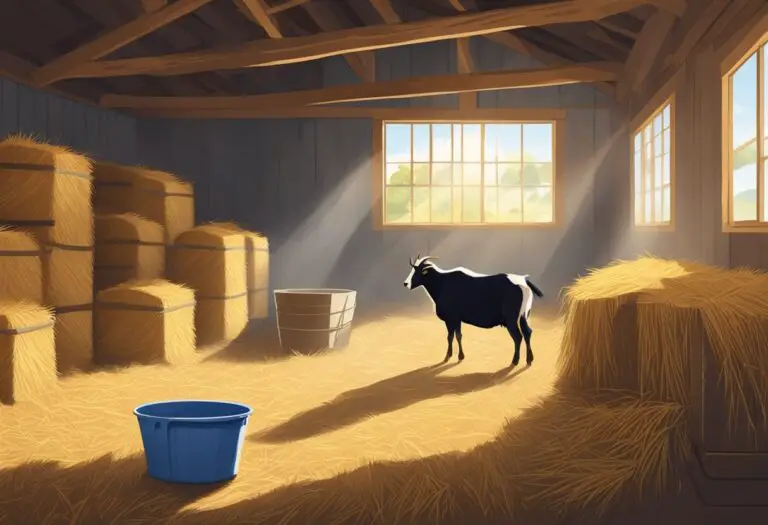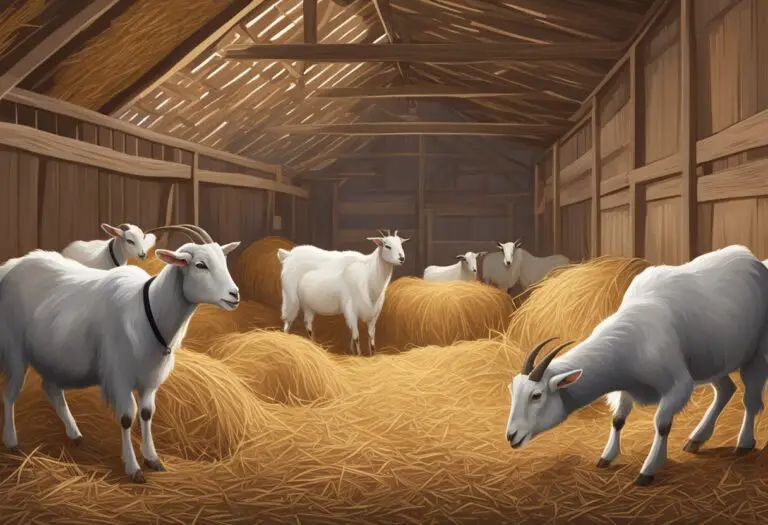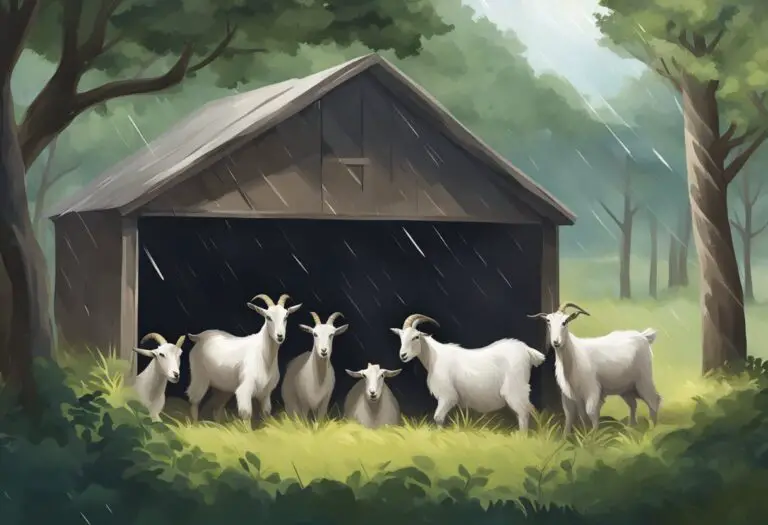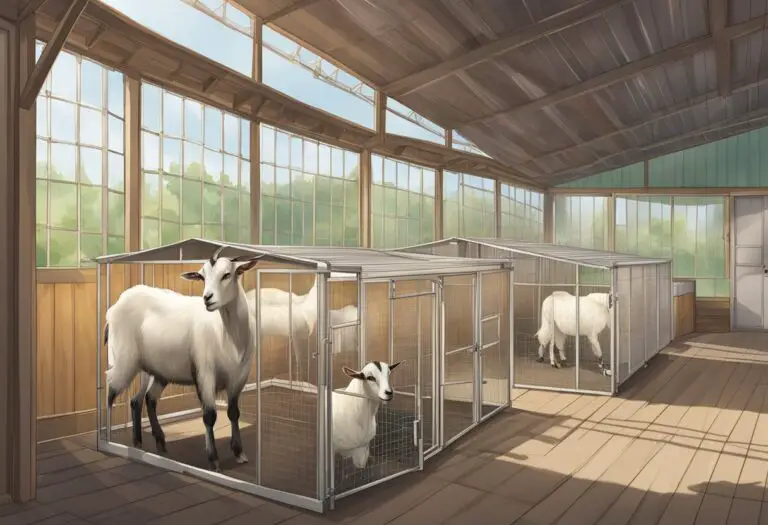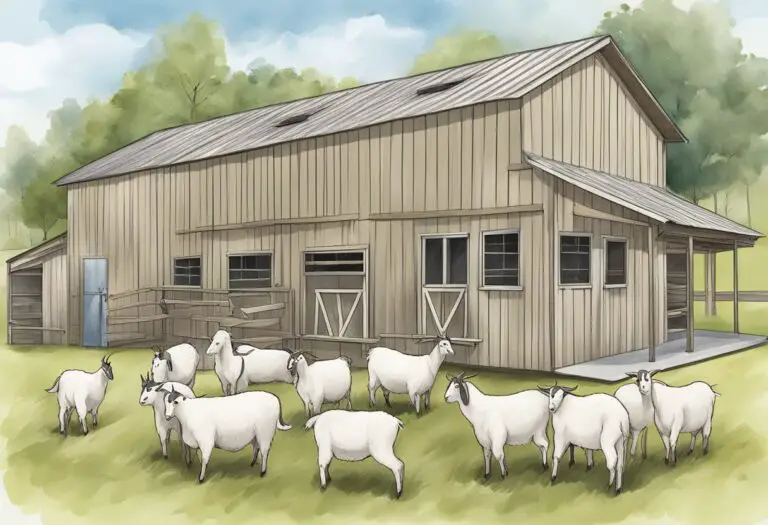When is the Best Time to Build a Goat House: Expert Advice
When it comes to keeping goats, building a sturdy and comfortable goat house is essential. A well-built goat house can provide a safe and secure environment for your goats, protect them from the elements, and help maintain their health and well-being. However, knowing when to build a goat house can be a challenge for many goat owners.
The best time to build a goat house depends on several factors, including the climate in your area, the size of your herd, and the availability of resources. In general, it is recommended to build a goat house before the onset of harsh weather conditions, such as winter or rainy season. This will ensure that your goats have a warm and dry place to stay during inclement weather. Additionally, it is important to consider the size of your herd when building a goat house, as larger herds may require more space and resources.
Understanding Goat Housing Needs

Goats are hardy animals that can adapt to a wide range of environments, but they still have specific housing needs that must be met to ensure their health and well-being. Understanding these needs is key to building a goat house that meets their requirements and keeps them comfortable and healthy.
Climate Considerations
One of the most important considerations when building a goat house is the climate. Goats can tolerate a wide range of temperatures, but they need protection from extreme weather conditions. In cold climates, the goat house should be insulated and have adequate ventilation to prevent moisture buildup. In hot climates, the goat house should be well-ventilated and have shade to protect the goats from the sun.
Space Requirements
Another important consideration when building a goat house is space. Goats need enough room to move around and lie down comfortably. The amount of space required depends on the size and breed of the goats, as well as the number of goats housed in the structure. As a general rule, each goat should have at least 20 square feet of indoor space and 200 square feet of outdoor space.
It’s also important to provide separate areas for feeding and sleeping. Goats are social animals, but they also need their own space to rest and eat without competition from other goats. Providing separate feeding and sleeping areas can help reduce stress and improve overall health.
In conclusion, understanding goat housing needs is essential to building a goat house that meets their requirements and keeps them healthy and comfortable. Climate considerations and space requirements are two of the most important factors to consider when designing and building a goat house.
Determining the Best Season for Construction

When it comes to building a goat house, timing is everything. Starting construction at the right time can save you money and time, and ensure that your goats have a comfortable and safe shelter. Here are some factors to consider when determining the best season for goat house construction.
Weather Patterns
Weather is a significant factor that can affect the construction process. Building a goat house during the rainy season can be challenging, as the ground may be too wet to pour a foundation. Also, extreme temperatures can make it difficult to work outside, which can cause delays in construction.
The best time to build a goat house is during the dry season when the ground is dry and the weather is mild. This will make it easier to pour a foundation and work outside, resulting in a faster and more efficient construction process.
Material Availability
Another factor to consider when determining the best season for goat house construction is material availability. Some materials may be more readily available during certain times of the year, which can affect the cost and timeline of your project.
For example, lumber prices tend to be higher in the spring and summer when demand is high. If you plan to use wood for your goat house, it may be more cost-effective to build during the fall or winter when prices are lower.
In conclusion, the best time to build a goat house is during the dry season when the weather is mild and the ground is dry. Additionally, it’s essential to consider material availability, as this can affect the cost and timeline of your project. By taking these factors into account, you can ensure that your goat house is built efficiently and cost-effectively.
Planning Your Build

When it comes to building a goat house, planning is key to ensure a successful and efficient construction process. This section will cover the important aspects of planning your build, including designing the layout, selecting materials, and budgeting.
Designing the Layout
Before starting construction, it is important to design the layout of the goat house. This includes determining the size of the structure, the number of goats it will house, and the placement of doors and windows. The layout should also consider the accessibility of the structure for cleaning and maintenance. A well-designed layout will ensure the comfort and safety of the goats, as well as the ease of care for the owner.
Selecting Materials
Choosing the right materials is crucial for the longevity and durability of the goat house. The materials should be sturdy enough to withstand harsh weather conditions and the wear and tear of the goats. Common materials used for goat houses include wood, metal, and concrete. When selecting materials, it is important to consider the cost, availability, and environmental impact.
Budgeting
Budgeting for a goat house involves determining the cost of materials, labor, and any additional expenses such as permits or equipment rentals. It is important to set a realistic budget and stick to it to avoid overspending. A well-planned budget will ensure that the goat house is built efficiently and within financial means.
In conclusion, planning your build is an essential step in constructing a goat house. Designing the layout, selecting materials, and budgeting are important aspects to consider to ensure a successful and efficient construction process.
Construction Process

When building a goat house, it is important to follow a proper construction process to ensure the safety and comfort of the animals. This section outlines the key steps involved in the construction process.
Foundation and Flooring
The foundation of the goat house should be strong and stable to support the weight of the structure and prevent any water from seeping in. The flooring should be made of durable materials that are easy to clean, such as concrete or wood. It is important to ensure that the flooring is level to prevent any injuries to the goats.
Walls and Roofing
The walls of the goat house should be sturdy and provide adequate protection from the elements. Wood or metal siding can be used for the walls, while the roof should be made of materials that are weather-resistant, such as metal or asphalt shingles. It is important to ensure that the roof is pitched correctly to prevent any water from pooling and causing damage.
Ventilation and Insulation
Proper ventilation is crucial to maintain good air quality inside the goat house and prevent the buildup of harmful gases. Windows and vents should be installed to allow for proper airflow. Insulation can also be added to keep the goats warm in colder months.
Overall, following a proper construction process is essential for building a safe and comfortable goat house. By paying attention to the foundation, flooring, walls, roofing, ventilation, and insulation, goat owners can ensure the health and well-being of their animals.
Post-Construction Considerations

After successfully building a goat house, there are some important considerations to keep in mind to ensure the longevity and comfort of the animals. Two key areas to focus on are furnishing and accessories, and maintenance and upkeep.
Furnishing and Accessories
When it comes to furnishing and accessories for a goat house, simplicity is key. Goats don’t require much in terms of furniture, but there are a few essentials to consider. Firstly, providing a clean and dry bedding area is crucial for the goats’ health and comfort. Straw, wood shavings, or even old hay can be used as bedding material. It’s important to keep the bedding clean and dry to prevent the growth of bacteria and fungi.
Another important accessory to consider is a feeding trough. Goats need access to fresh water and food at all times, so providing a feeding trough will help keep their food clean and organized. A salt lick is also a good idea, as it provides essential minerals that may not be present in their regular diet.
Maintenance and Upkeep
Regular maintenance and upkeep of the goat house is essential to ensure its longevity and the health of the goats. One important task is to regularly clean out the bedding area, removing any soiled or wet bedding material. This will help prevent the growth of bacteria and fungi that can cause health problems for the goats.
It’s also important to inspect the goat house for any signs of wear and tear, such as cracks or holes in the walls or roof. These should be repaired as soon as possible to prevent further damage and to ensure the goats are protected from the elements.
In addition, keeping the goat house clean and well-ventilated will help prevent the build-up of ammonia and other harmful gases that can cause respiratory problems for the goats. Regularly sweeping and hosing down the floors and walls will help keep the goat house clean and fresh.
Overall, by considering these post-construction factors, goat owners can ensure that their goat house is a safe and comfortable environment for their animals.


